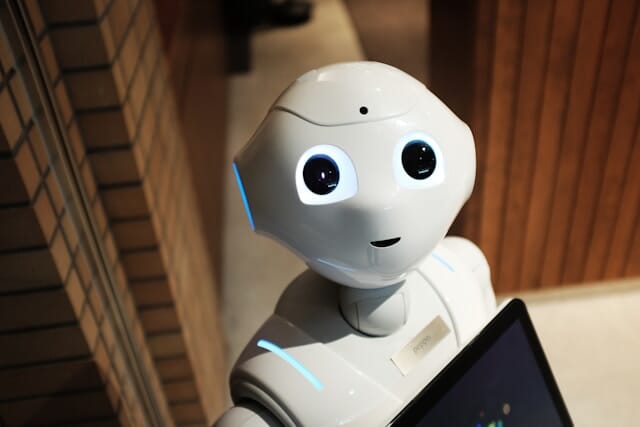Amazon is gearing up to deploy advanced robots across its warehouses. This move, revealed through leaked internal documents, could effectively replace the need for 600,000 human workers by 2033. As the company pushes for unprecedented efficiency, what does this mean for jobs, innovation, and the future of work?
Amazon Robotics Automation Strategy Unveiled
Amazon's journey into robotics isn't new, but the scale of its latest plans is staggering. The company, which already boasts over one million robots in its facilities worldwide, is accelerating its automation efforts. Starting with the acquisition of Kiva Systems in 2012 for $775 million, Amazon has built an empire of mechanical helpers that move shelves, sort packages, and streamline operations.
Recent introductions include sophisticated robots like Sparrow, which can pick and place individual items with precision; Cardinal, designed for heavy lifting; and Proteus, an autonomous mobile robot that navigates warehouses independently. Then there's Vulcan, a new robot that can "feel" items it's handling, marking a leap in tactile technology. Sequoia and Digit, the latter a humanoid robot from Agility Robotics, are being tested to handle totes and repetitive tasks, potentially reducing ergonomic strains on human workers.
These robots aren't just gadgets; they're part of a strategic overhaul. Amazon's Shreveport, Louisiana facility serves as a blueprint, employing a thousand robots and requiring 25 percent fewer workers than traditional setups. Plans are in place to replicate this model in about 40 new facilities by 2027, including a massive one in Virginia Beach. Older warehouses, like the one in Stone Mountain, Georgia, are being retrofitted, projecting a 10 percent increase in processing capacity with up to 1,200 fewer employees.
The automation team, comprising over 3,000 engineers, aims to automate 75 percent of operations eventually. This isn't about replacing humans overnight but optimizing processes to handle twice the product volume by 2033 without proportional workforce growth.
Leaked Documents Expose Amazon's 600,000 Worker Replacement Ambitions
The bombshell came from leaked internal strategy documents, first reported by outlets like The Verge and TechSpot. These papers reveal Amazon's goal to avoid hiring more than 600,000 U.S. workers over the next decade through ramped-up robotics. By flattening the hiring curve, the company expects to save $12.6 billion from 2025 to 2027 alone.
Executives presented to the board that robotic automation would negate the need for additional staff, even as sales double. Short-term projections include avoiding 160,000 hires by 2027, shaving 30 cents off each item's processing cost. This efficiency drive is fueled by deploying 1,000 robots daily, pushing the total beyond the million mark achieved in mid-2025.
Amazon's response? The documents are incomplete and don't reflect the full hiring strategy. Yet, the leaks highlight a calculated push toward a robot-dominated workforce, with humans shifting to oversight roles.
Impact of Amazon Robots on Jobs and Workers
While Amazon insists no layoffs are planned, relying on natural attrition, the implications are profound. The U.S. workforce has grown to 1.2 million since 2018, but future growth may stall. Facilities like Stone Mountain could see their 4,000-strong teams shrink, affecting predominantly Black and minority workers who make up a significant portion of warehouse staff.
On the flip side, automation creates new opportunities. Robotics technicians, starting at $24.45 per hour, are in demand, with nearly 5,000 trained through Amazon's mechatronics program since 2019. The company plans to hire 250,000 for the holiday season, though many are temporary.
Critics argue this displaces low-skilled jobs, exacerbating inequality. Amazon's strategy includes PR efforts to portray itself as a "good corporate citizen," participating in community events and avoiding buzzwords like "automation" in favor of "advanced technology." This narrative control aims to mitigate backlash in affected areas.
Broader economic effects? Reduced human hires could pressure wages and job markets in logistics-heavy regions. However, savings might enable expansions, like more rural delivery depots, potentially creating indirect employment.
Future Projections for Amazon Warehouse Automation
Looking ahead, Amazon envisions warehouses as high-tech factories where humans and robots collaborate seamlessly. With costs for the automation plan under $10 billion, the ROI is clear: enhanced speed, lower errors, and scalability.
By 2033, if sales double as projected, robots could handle the bulk of picking, packing, and shipping. This aligns with industry trends, where competitors like Walmart and FedEx also invest in robotics, but Amazon leads as the world's largest operator of mobile robots.
Challenges remain, though. Robots struggle with complex tasks like handling irregular items or adapting to dynamic environments. Human oversight will be crucial, evolving jobs toward engineering and maintenance.
Ethical and Social Implications of Amazon's Robot Deployment
Read More

